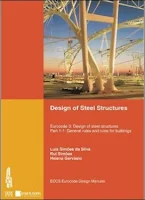Experimental Unsaturated Soil Mechanics
Tom Schanz ... 505 pages - Publisher: Springer Berlin Heidelberg; 1st edition (June, 2007) ... Language: English - ASIN: B001BS6NKQ by Amazon.
These proceedings are a continuation of the series of International Conferences in Germany entitled 'Mechanics of Unsaturated Soils.' The primary objective is to discuss and understand unsaturated soil behaviour such that engineered activities are made better with times in terms of judgement and quality. We all realise by now that in addition to the knowledge on the classical concepts, it becomes an enormous challenging task to adapt convincing new concepts and present them in such a way that it could be used in engineering practices. The experimental studies reported primarily focus on the role of microstructure and fabric for the complex coupled hydro-mechanical behaviour of cohesive frictional materials. Several papers consider the relevance of temperature affecting the constitutive behaviour of clays. Common features of state of the art theoretical and numerical approaches, including theory of porous media and mixture theory, intend to describe the complex multi-field problems of fully coupled thermo-hydraulic-mechanical-chemical initial - boundary value problems. Applications include highly toxic waste disposals, slope stability problems and contaminants transport in porous media. These proceedings would have been not possible without financial support by the German Research Foundation (DFG). We gratefully acknowledge the support of ISSMGE, especially TC6 'Unsaturated Soils'.
These proceedings are a continuation of the series of International Conferences in Germany entitled 'Mechanics of Unsaturated Soils.' The primary objective is to discuss and understand unsaturated soil behaviour such that engineered activities are made better with times in terms of judgement and quality. We all realise by now that in addition to the knowledge on the classical concepts, it becomes an enormous challenging task to adapt convincing new concepts and present them in such a way that it could be used in engineering practices. The experimental studies reported primarily focus on the role of microstructure and fabric for the complex coupled hydro-mechanical behaviour of cohesive frictional materials. Several papers consider the relevance of temperature affecting the constitutive behaviour of clays. Common features of state of the art theoretical and numerical approaches, including theory of porous media and mixture theory, intend to describe the complex multi-field problems of fully coupled thermo-hydraulic-mechanical-chemical initial - boundary value problems. Applications include highly toxic waste disposals, slope stability problems and contaminants transport in porous media. These proceedings would have been not possible without financial support by the German Research Foundation (DFG). We gratefully acknowledge the support of ISSMGE, especially TC6 'Unsaturated Soils'.





